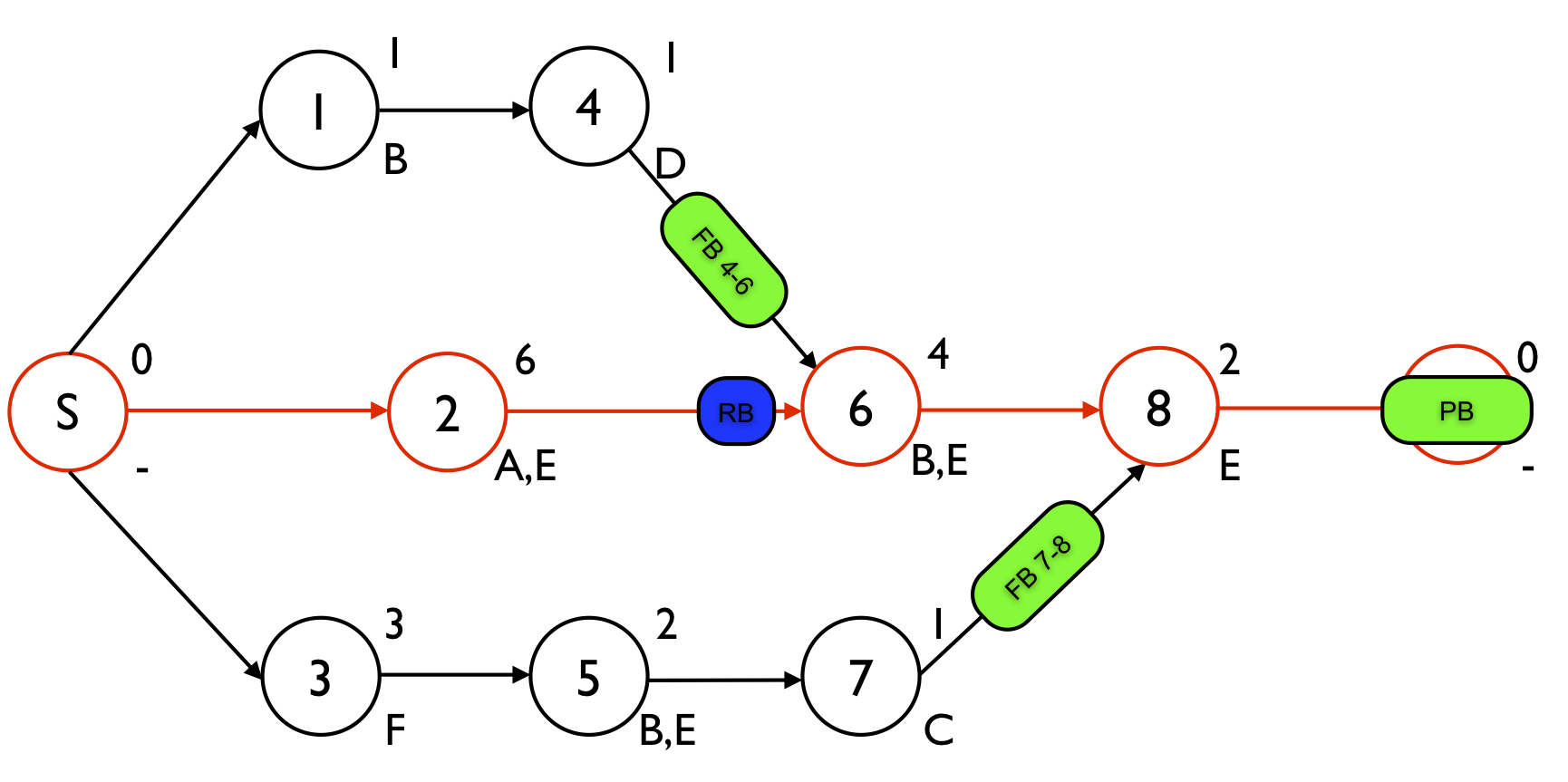Critical Chain/Buffer Management: Adding buffers to a project schedule
Submitted by Mario Vanhoucke on Tue, 01/17/2012 - 13:43


The Critical Chain/Buffer Management (CC/BM) approach aims at the construction of latest start schedules where the project activities use aggressive time estimates and puts a clear focus on the determination of a realistic project deadline. In order to keep the probability high that the project deadline will be met, the CC/BM approach protects the project duration and the critical chain of the project using various buffers. This buffered scheduling approach is the topic of this article and is discussed along the following dimensions:
- Project buffer: A unique and single buffer to protect the project deadline
- Feeding buffer: Multiple buffers to protect parts of the critical chain
- Resource buffer: Multiple artificial buffers that act as warning signals to assure the availability of resources
Figure 1 displays a project network with 8 activities and a latest start schedule with a project duration of 12 time units. The numbers above each node in the network are used to refer to the aggressive activity duration estimate (see ”Aggressive activity time estimates: protecting against activity delays”) while the label below the node refers to a renewable resource that is required to perform the activity. The renewable resources A, B, C, D and F have an availability of one, while the renewable resource E availability is restricted to two units. The construction of the resource feasible latest start schedule is discussed in ”Critical Chain/Buffer Management: (Dis-)advantages of scheduling projects as-late-as-possible”.

?Figure 1. An example project network and a resource feasible latest start schedule
The CC/BM approach assumes that meeting the project deadline is the scheduling objective (see “Resource constrained project scheduling: What is my scheduling objective?”) and hence the use of buffers is suggested to guarantee that the project is completed on or before the predefined project deadline with a high probability.
Project buffer
A project buffer protects the project deadline against violations in the critical chain.
A single project buffer is added at the end of the project network between the last activity and the project deadline. Any delays on the critical chain will partly consume this buffer without having an effect on the project completion date. Consequently, a project buffer acts as a protection of the project completion date which might be variable due to changes in activity durations on the critical chain. Its size should depend on the expected changes and variability of the activities on the critical chain. Figure 2 displays the unique project buffer at the end of the project (final node E).
Feeding buffers
A feeding buffer protects the critical chain against violations in the feeding chain.
Any path of activities merging into the critical chain is called a feeding chain. In the example project of figure 1, feeding chains 1 - 4 and 3 - 5 - 7 merge into the critical chain 2 - 6 - 8 through the links (4-6) and (7,8), respectively. Since the project buffer is inserted in the project schedule as a protection of the project deadline against changes in the critical chain, the critical chain should also be protected against changes in any feeding chain. Consequently, similar to the project buffer between the last activity of the critical chain and the project completion date, feeding buffers between any last activity of a feeding chain and the activity on the critical chain will be added to the project baseline schedule. This results in feeding buffers FB4-6 and FB7-8 in the project network of figure 2.
Resource buffers
A resource buffer acts as a warning signal when a shift in resources will occur on the critical chain.
While both the project buffer and feeding buffers act as mechanisms to transpose (part of) the removed safety time of the individual activities to safety time buffers, resource buffers act as warning signals that ensure the timely availability of project resources. More precisely, resource buffers can be set alongside of the critical chain to ensure that the renewable resources are available to work on the critical chain activities as soon as they are needed. Consequently, a resource buffer warning signal is added each time an activity needs a renewable resource that is not used by the previous activity. In figure 2, a resource buffer is added between activities 2 and 6 to ensure that resource B is available upon the start of activity 6.

?Figure 2. The project network of figure 1 with feeding, resource and project buffers
Figure 2 shows the buffered network of figure 1 with one project buffer, two feeding buffers and one resource buffer. The size of the project and feeding buffers depends on the project characteristics and is discussed in ”Critical Chain/Buffer Management: Sizing project and feeding buffers”.
© OR-AS. PM Knowledge Center is made by OR-AS bvba | Contact us at info@or-as.be | Visit us at www.or-as.be | Follow us at @ORASTalks


